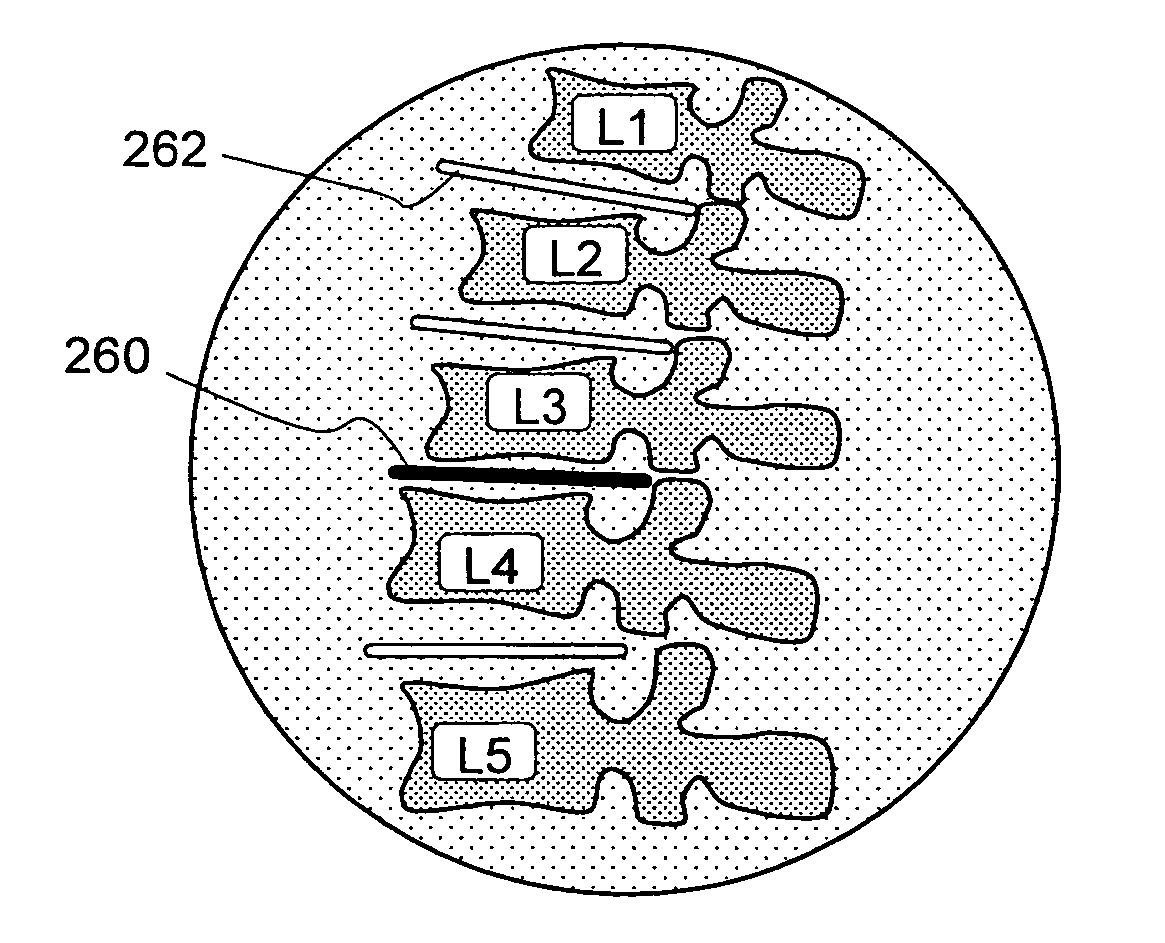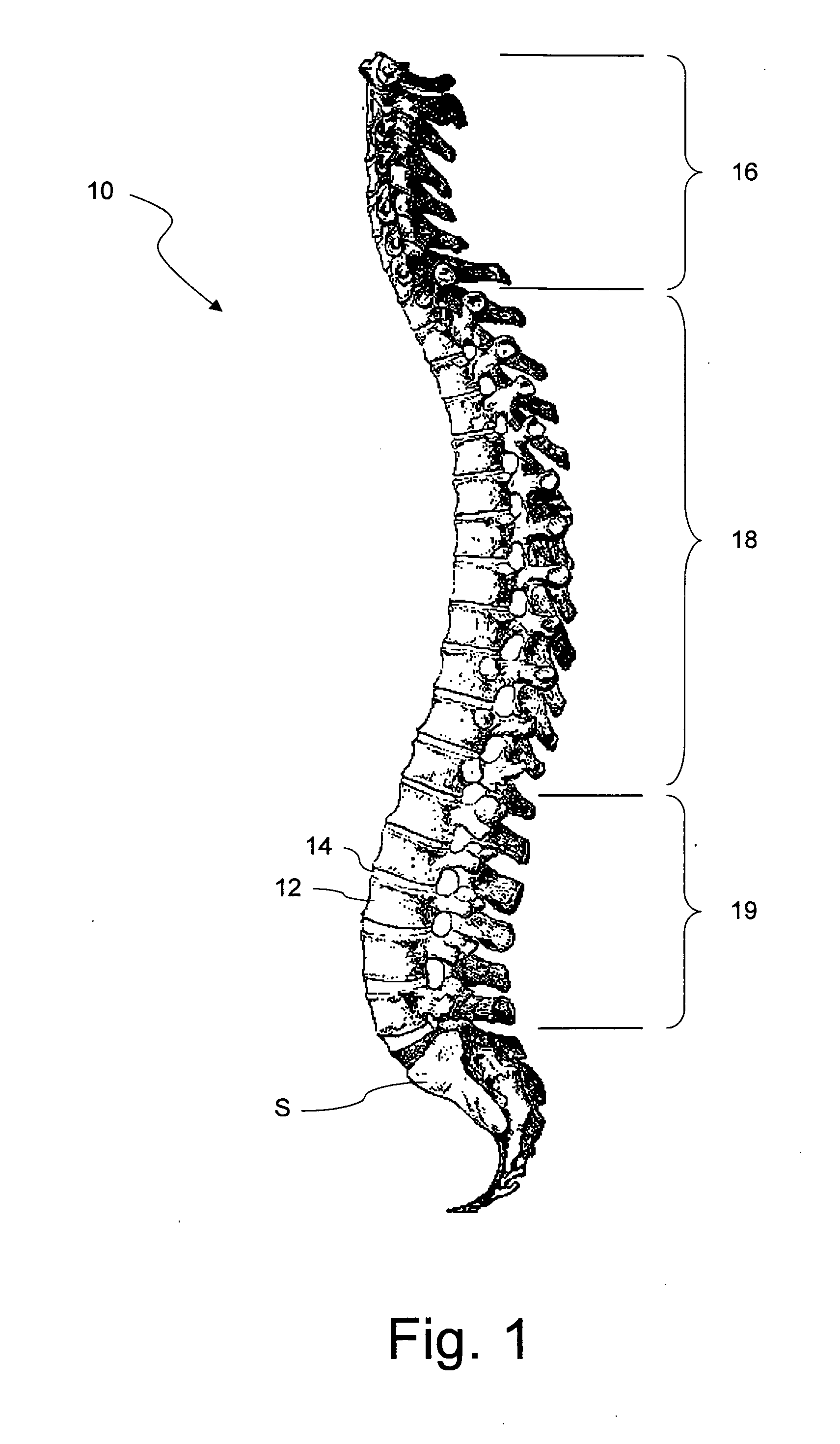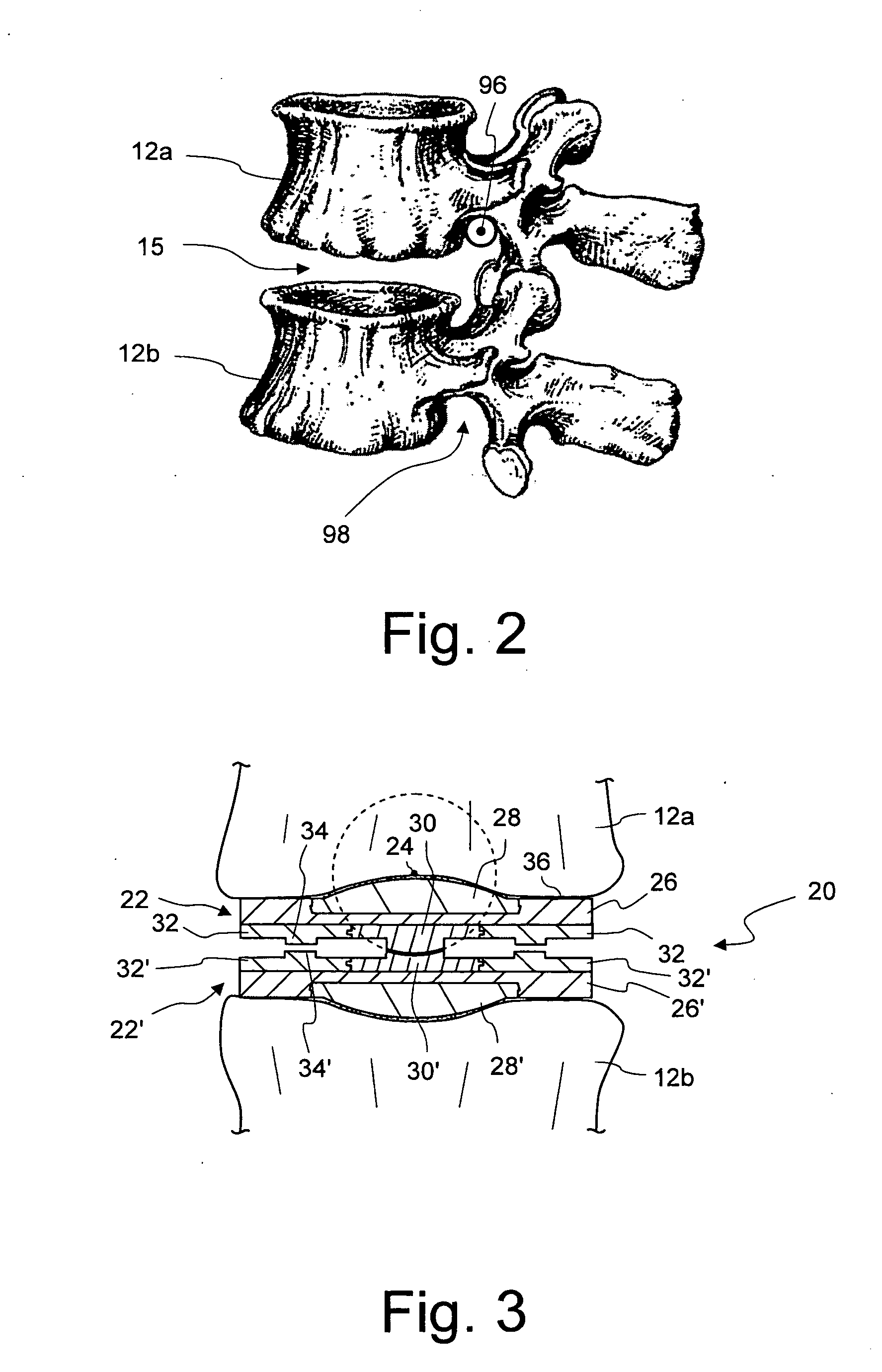Computer program for spine mobility simulation and spine simulation method
a computer program and spine technology, applied in medical simulation, image data processing, sensors, etc., can solve the problems of increasing the stress on adjacent spinal motion segments, predisposing neighboring spinal motion segments to rapid deterioration, and lack of mobility,
- Summary
- Abstract
- Description
- Claims
- Application Information
AI Technical Summary
Benefits of technology
Problems solved by technology
Method used
Image
Examples
Embodiment Construction
[0122]1. Introduction
[0123]FIG. 1 is a side view of a human spine comprising vertebrae 12 and intervertebral disks 14 which are arranged in intervertebral disk compartments formed between adjacent vertebrae 12. The first seven vertebrae 12 of the spine 10, counted from its top, form the cervical spinal column 16, the following twelve vertebrae the thoracic spinal column 18, and the remaining five vertebrae 12 the lumbar spinal column 19. The latter is connected by the sacrum S to the pelvic. The cervical and lumbar spinal columns 16, 19 have a lordotic curvature, whereas the thoracic spinal column 18 has a kyphotic curvature. From FIG. 1 it becomes clear that the vertebrae 12 and also the intervertebral disks 14 have different shapes and sizes. This, in turn, results in the different curvatures and also in different mobilities of the spinal segments. Thus the joints formed by pairs of adjacent vertebrae 12 have properties that significantly differ along the spinal column.
[0124]FIG. ...
PUM
 Login to View More
Login to View More Abstract
Description
Claims
Application Information
 Login to View More
Login to View More - R&D
- Intellectual Property
- Life Sciences
- Materials
- Tech Scout
- Unparalleled Data Quality
- Higher Quality Content
- 60% Fewer Hallucinations
Browse by: Latest US Patents, China's latest patents, Technical Efficacy Thesaurus, Application Domain, Technology Topic, Popular Technical Reports.
© 2025 PatSnap. All rights reserved.Legal|Privacy policy|Modern Slavery Act Transparency Statement|Sitemap|About US| Contact US: help@patsnap.com



